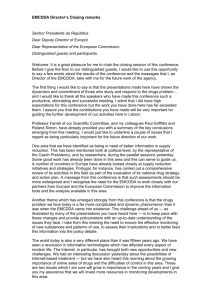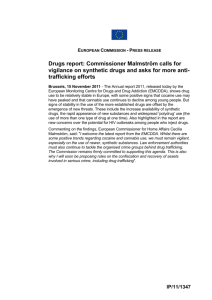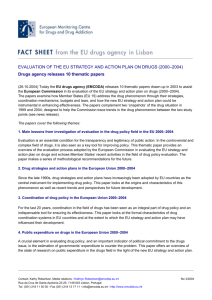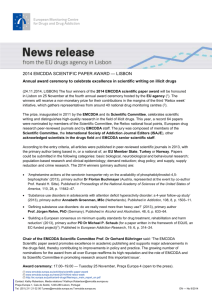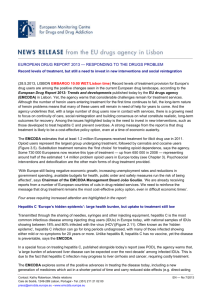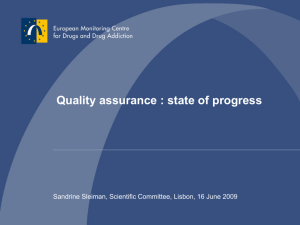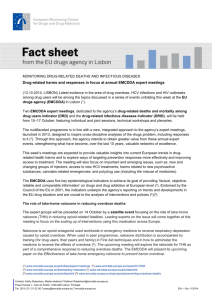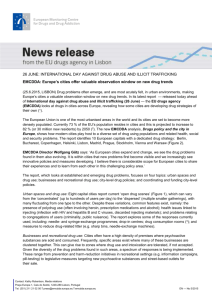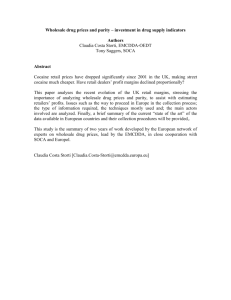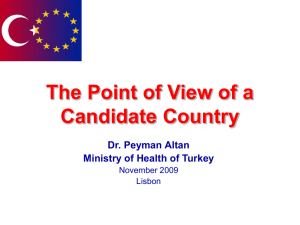An EMCDDA View on Recovery
advertisement
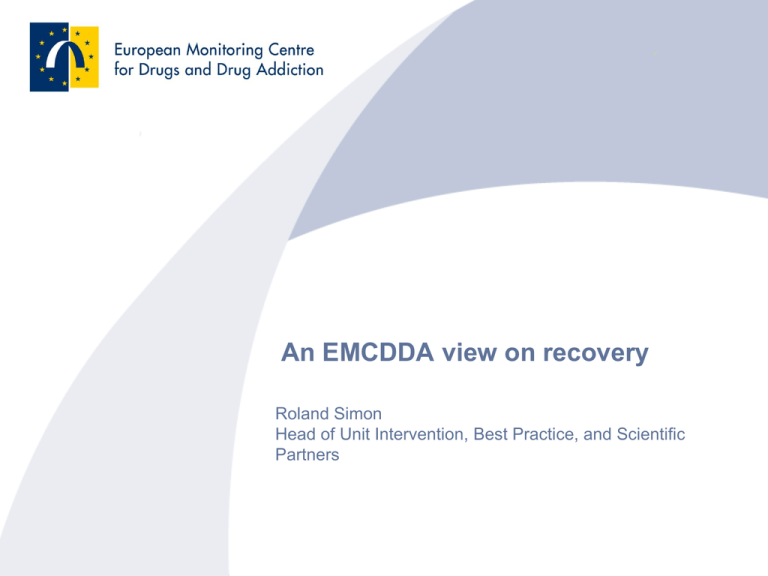
An EMCDDA view on recovery Roland Simon Head of Unit Intervention, Best Practice, and Scientific Partners Trends end of the 90s in Europe Drug related death HIV infection Criminal behaviour Drug market size 2 Some doubt about the success remained • How many drug addicts reached abstinence? • What where their levels of social functioning? • How is the clients’ well-being? 3 But: Long term perspective sometimes missing dead In substitution From that: 8,1% 70.4% stable Instable Unclear not In substitution From that: abstinent 7.1% In abstince oriented facility Ongoing residential Prison Drop-out unclear Sources: Wittchen, Bühringer, Rehm (2010) PREMOS Final report to the Federal Ministry for Health 4 Social situation of drug users (TDI) Education • Primary level of education • Primary level not completed 37% 2% Labour status • Regular employment 30% Accommodation status • Unstable accommodation 8% Sources: EMCDDA (2012). Social reintegration and employment: evidence and interventions for drug users in treatment. Luxembourg: Office for Publications 5 Recovery: Reintegeration is crucial Addiction Stabilisation Abstinence Integration social reintegration Recovery Recovery 6 “Recovery” stands for .. State • Personal (mental) health Well-being • Drug free • Social functioning Process of individual development • towards the state of “recovery” Policy objective 7 Recovery and policy • • • • Recovery stands for a re-focussing of treatment and drug policy - an answer to short-comings in practice Social reintegration core element of recovery Not a minority position, but explicit and implicit in national policies Most explicit in UK and Ireland 8 Recovery in EU policy papers • 2012: EU Drug Strategy 2013-2015 elements of drug demand reduction: • • • • • Prevention Early detection/ intervention Treatment and harm reduction treatment Rehabilitation and social reintegration Recovery 9 Recovery in the EU Drug Action Plan 2013-2016 Action 6. Expand the provision of .. recovery services Responsible: MSs Assessment mechanism: EMCDDA Action 9. Agree and commence EU minimum quality standards, also on recovery Responsible: COM Assessment mechanism: EMCDDA Best Practice Portal Over arching indicator 12 12. Evidence based interventions on prevention, treatment, social integration and recovery and their expected impact on drug use prevalence and problem drug use (EMCDDA Best Practice Portal) 10 The EMCDDA contributions EMCDDA (2012): Social rehabilitation and employment: evidence and interventions for drug users in treatment. Luxembourg: Publications Office of the European Union. 11 EMCDDA contributions Coming out soon: Therapeutic communities for addictions in Europe: evidence, current practices and future challenges of a treatment approach Therapeutic communities: definition, history and key characteristics The availability of TC in Europe today TC-practices in selected EU-countries: United Kingdom – France – Sweden - Belgium Spain – Poland - Czech Republic Review of the effectiveness of TCs for addictions 14 TC standards and guidelines Recent developments and future challenges 12 EMCDDA contributions Coming out soon: Therapeutic communities … Conclusions: TC programmes for the rehabilitation of drug users are established in many European countries and play a role as part of the national addiction treatment systems. There is some evidence for the effectiveness of TCs in terms of reduced substance use and criminal activity, at least in the United States and a culture of TC research is being developed in Europe. 13
